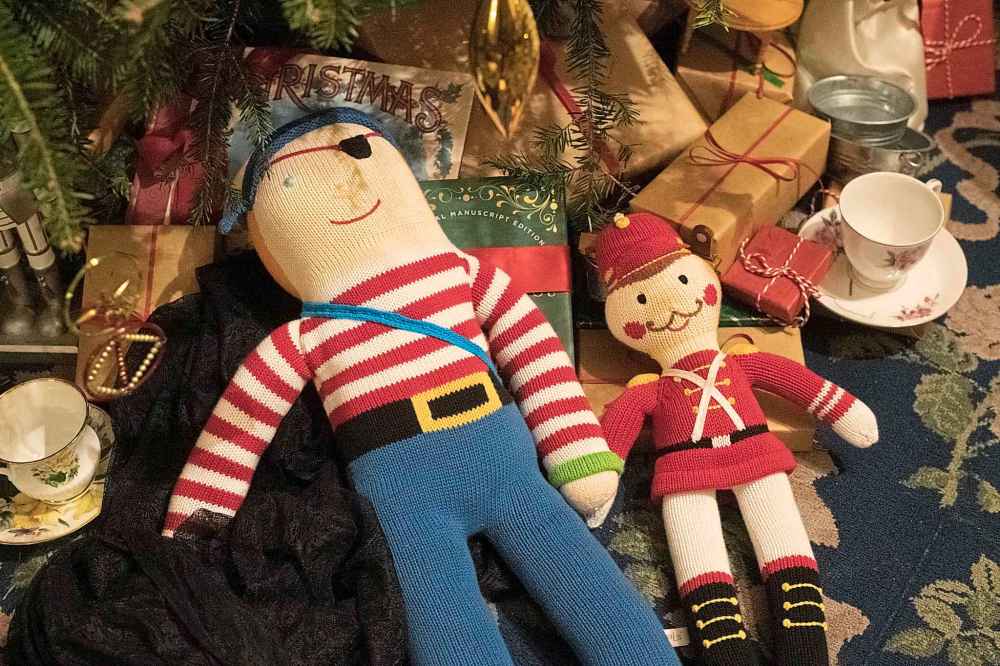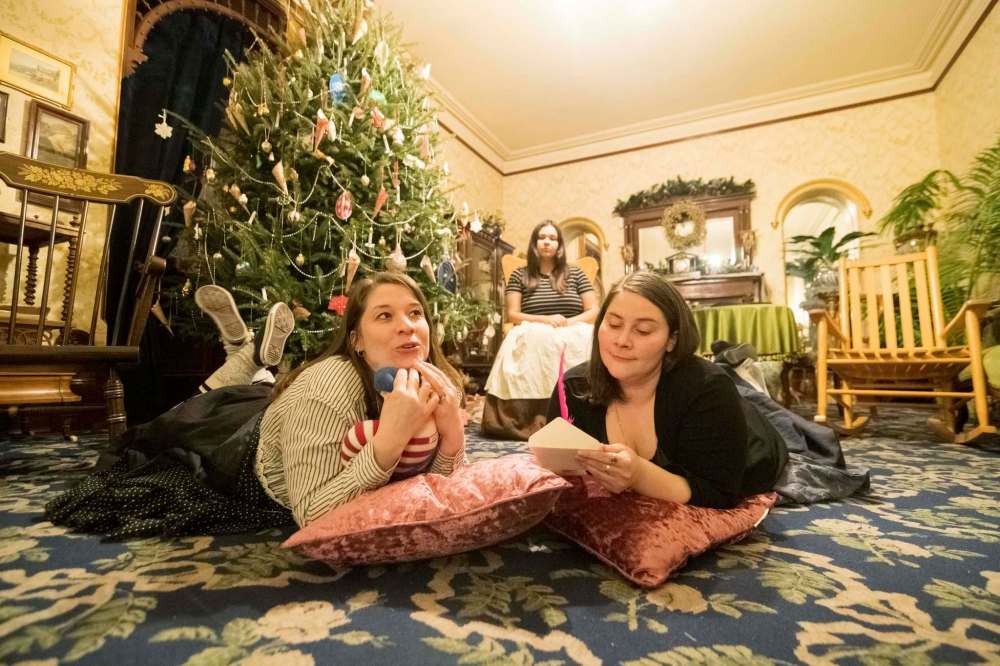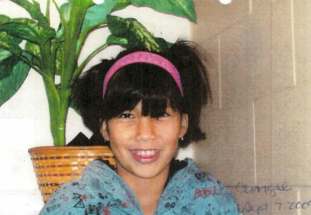Fur trade women swap sordid tales Characters' gossip focuses on historical figures
Read this article for free:
or
Already have an account? Log in here »
To continue reading, please subscribe:
Monthly Digital Subscription
$1 per week for 24 weeks*
- Enjoy unlimited reading on winnipegfreepress.com
- Read the E-Edition, our digital replica newspaper
- Access News Break, our award-winning app
- Play interactive puzzles
*Billed as $4.00 plus GST every four weeks. After 24 weeks, price increases to the regular rate of $19.00 plus GST every four weeks. Offer available to new and qualified returning subscribers only. Cancel any time.
Monthly Digital Subscription
$4.75/week*
- Enjoy unlimited reading on winnipegfreepress.com
- Read the E-Edition, our digital replica newspaper
- Access News Break, our award-winning app
- Play interactive puzzles
*Billed as $19 plus GST every four weeks. Cancel any time.
To continue reading, please subscribe:
Add Free Press access to your Brandon Sun subscription for only an additional
$1 for the first 4 weeks*
*Your next subscription payment will increase by $1.00 and you will be charged $16.99 plus GST for four weeks. After four weeks, your payment will increase to $23.99 plus GST every four weeks.
Read unlimited articles for free today:
or
Already have an account? Log in here »
Hey there, time traveller!
This article was published 13/12/2018 (2489 days ago), so information in it may no longer be current.
The cheekily subversive vibe of Women of the Fur Trade is set before a character even says a word.
Theatre review
Women of the Fur Trade
Vault Productions
● Dalnavert Museum, 61 Carlton St.
● To Sunday, Dec. 16 ● Sold out
★★★1/2 out of five
The production takes place at Dalnavert Museum, the grand Victorian home on Carlton Avenue that once belonged to Sir Hugh John Macdonald. Hugh was the son of John A. Macdonald, Canada’s first prime minister and the subject of much derision in Frances Koncan’s historical comedy, set in the Red River Colony when the PM was trying to quell the resistance led by Louis Riel.
The house — all done up for Christmas — serves as the setting of an unnamed fort where a trio of women gossip about the prominent figures of the day, throwing considerable shade at John A. Macdonald while sitting in his son’s former parlour.
That winking sense of irony pervades much of the Winnipeg playwright and director’s work, which masks its anger under a humorous veneer.
And make no mistake, Women of the Fur Trade, especially in its first half, is very, very funny.

The year is 18-something-something and the three women — Métis Marie-Angelique (Katie German), Ojibwe Eugenia (Erica Wilson) and white settler Cecilia (Kerri Potter) — are sitting in their rocking chairs in petticoats, talking boys and talking trash.
They try to one-up each other with quotes about the nature of celebrity, tossing out bon mots from Andy Warhol, Virginia Woolf and Tyra Banks, and veering wildly from being BFFs to vowing to unfollow each other on Instagram.
The mix of period language and modern slang is an irreverent way to get at the notion of time’s cyclical nature. The more things change, the more they stay the same; however far we’ve come, the struggles for women’s rights and truth and reconciliation are far from over.
Clutching a woollen doll in a soldier’s regalia, Cecilia is mooning over Thomas Scott — his bangin’ bod, the way he parts his hair slightly to the left, his unique beard-moustache combo all add to the crush she has on the Irish-born Protestant and enemy of the territory’s provisional government.

Marie-Angelique, meanwhile, has it bad for Riel (represented by a pirate doll wearing an eye patch). She dreams of the life she and the passionate politician — who also has a strong facial-hair game — will have once they’re married, looking forward to offering him both children and her unpaid emotional labour.
The no-nonsense Eugenia — a trapper from the north — doesn’t have time for such silly affairs, stating her preference for freedom over a man (though she later weakens and confesses her passion for Gabriel Dumont, the Métis leader and Riel ally).
But the conversation soon gets more serious, as the squabbling of the women reflects modern conflicts among settler, Métis and Indigenous populations. Koncan weaves in notions of lost language, divided loyalties and being trapped in historic roles as impediments to progress.
The three actors work well together, even when their dialogue overlaps. As Cecilia, Potter is a lively presence, so eager to please but unable to see her way out of her privilege. German’s girlish glee is tempered with sadness about her past. Wilson has a stoic reserve, but her lines are sometimes lost to mumbly enunciation.

Women of the Fur Trade — which won first prize in the Toronto Fringe Festival’s New Play Contest — is a work in progress that is being developed into a full-length play, and it does feel somewhat unfinished. Over the course of its short 65-minute running time (no intermission), the tone is uneven.
Metaphors about the women being sequestered in a house with no doors (or doors that keep moving) need to be fleshed out, as do their characters, and the dark ending, while affecting, feels too sudden and unearned.
There’s plenty of promise here, though, and Koncan’s unique vision gives voice to characters we don’t hear enough from, onstage or in history.
jill.wilson@freepress.mb.ca
Twitter: @dedaumier

Jill Wilson writes about culture and the culinary arts for the Arts & Life section.
Our newsroom depends on a growing audience of readers to power our journalism. If you are not a paid reader, please consider becoming a subscriber.
Our newsroom depends on its audience of readers to power our journalism. Thank you for your support.











